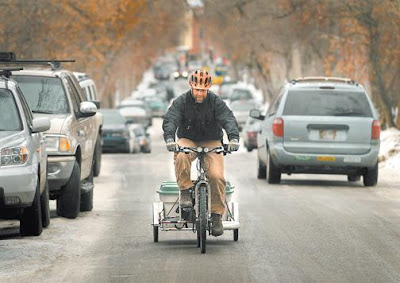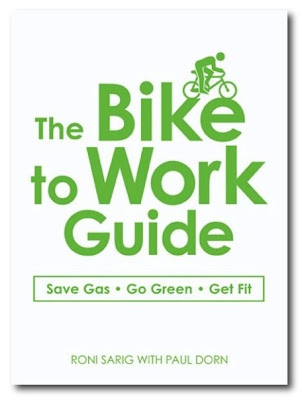From the Los Angeles Times, 01.21.09:
Traffic can't stop George HincapieBicyclists in California are getting excited in anticipation of next month's big Amgen Tour of California, arguably the most significant bicycle race in the U.S. It begins February 14 in Sacramento, and your blogging correspondent will be there.
After finishing 45th in Stage 2 of the Tour Down Under, Lance Armstrong answered a few questions and then was escorted into a royal blue Skoda car and beat a quick exit from the oval where the team support vehicles were set up....Most cyclists wait until the entire team has settled down, rehydrated, done interviews, relaxed a bit and then get on a team bus and head back to the hotel.
And then there are the smart guys, such as Team Columbia's George Hincapie...He rode his bicycle the 15 miles from the finish in Stirling to the Hilton in Adelaide.
While a particular car full of journalists was waiting impatiently at a stop light and trying to rely on the Hertz NeverLost guidance voice to tell them where to go, Hincapie breezed on by, still on his bike, pedaling on back to the hotel. He beat the car and didn't even need the NeverLost lady. (Read more.)
Bicycle racing has little to do with bike commuting, except in the sense that it helps raise awareness of bicycling in general. Certainly Lance Armstrong's success in the Tour de France inspired many Americans to take up bicycling, and many have continued as bicycle commuters. Armstrong has since become a proponent of bicycling and bike commuting, most notably with his support of the League of American Bicyclists and the recent opening of his Mellow Johnny's bicycle shop in downtown Austin.
And it's hard not to admire George Hincapie, an extremely talented bike racer and consummate team player, who has subordinated own chances to be Armstrong's most trusted lieutenant on the great USPS and Discovery teams. I had the opportunity to witness Hincapie's victory in the 2001 San Francisco Grand Prix, an important but short-lived one-day race.
Image: Graham Watson, from GeorgeHincapie.com.
Visit: Lance wants more bike commuters, Bike Commute Tips Blog
Visit: Paul Dorn's Bike Commuting Tips Site
Tip of the Pendleton felt hat to Subcommandant Sasquatch for the tip.






